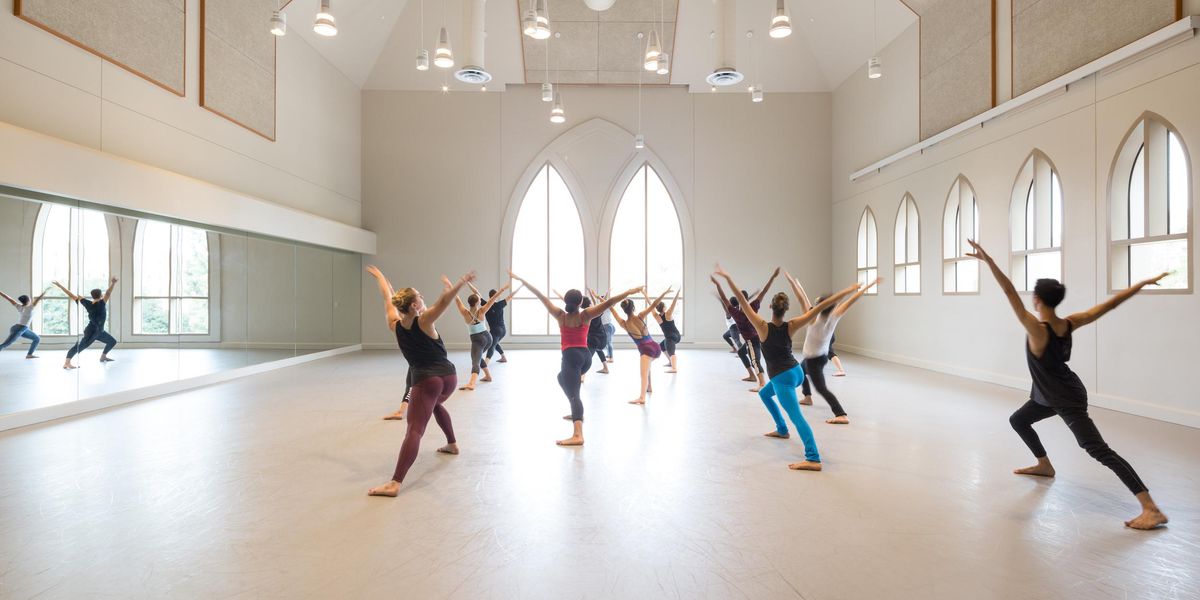Working Out With Michele Wiles
The entrepreneurial dancer relies on floor barre/massage guru Marjorie Liebert.
When Michele Wiles created BalletNext in 2011, she invited Mauro Bigonzetti to create a duet for her and Drew Jacoby. Bigonzetti not only gifted Wiles with his challenging contemporary work, but he also introduced her to the woman who would help her dance his ballets: Marjorie Liebert. “I had micro-tears in my calf that we discovered were probably from my past back injuries,” remembers Wiles. “She’s freed up my back, and changed how I dance.”
A former principal with American Ballet Theatre, Wiles has dealt with back problems, like stress fractures and bulging discs throughout her career. She tried strengthening with Pilates, Gyrotonic, swimming and the elliptical trainer, but nothing stuck. When she left ABT at 31, she found herself needing to reorganize her body for BalletNext’s contemporary rep. “In ballet, there are all these pressures: perfect winged feet, 180 turnout, the list goes on,” says Wiles. “But at a certain point you have to let all of that go and find your natural self if you want to keep dancing without pain.”
She’s found her natural self through Liebert. A former dancer, Liebert is a ballet mistress and movement therapist who has coached several injured dancers, including Misty Copeland, back to the stage. She was chosen by Boris Kniaseff to carry on his barre-à-terre method, and uses it to help dancers find their true placement.
Doing an entire ballet barre lying on the floor, with nothing to grip or hang on to, Wiles discovered tiny muscles that don’t get used when standing. After months of working horizontally in private and small group classes, she was surprised to find how much more strength she had when she stood up to do a regular barre.
In addition to floor barre, Liebert and Wiles meet every Sunday for a two-hour private session that is mostly massage, with corrective exercises interspersed. They focus on loosening different parts of the body and finding new ways to move in the most natural way. Most recently, says Wiles, “I am learning about my feet, educating them on how to be normal again. Until recently, Marjorie had not been able to manipulate my toes, because I always wanted to be in a winged position.” She now wears socks at the barre so that she can feel each of her toes and become more aware of how she is standing.
The sessions have brought noticeable changes to Wiles’ dancing, particularly her port de bras. “There is much more freedom in everything, and a new fluidity in my upper body,” she says. “A friend recently said it was apparent that I have completely changed my mind about how I am working.”
Connect with Your Core
Wiles warms up for class with this ab exercise to center herself. “I always notice that my hamstrings loosen after because I’ve engaged my core,” she says.
1. Place a circular Thera-Band (or one tied in a loop) around your upper calves. Lying on your back, arms alongside your torso with your knees bent, feet flat on the floor, push out into the band until you feel resistance.
2. Flex your feet and slide your heels away from your torso, feeling your whole body engage. Bring them back to the start position.
3. Try other variations: Arms off the floor, upper body lifted in an abdominal curl, toes scrunched or even legs in the air; continue to push slightly out into the band and stretch and bend the knees.
Be Shinful
“
Marjorie taught me that a proper pointe comes from feeling energy radiate from your shin down to your foot,” says Wiles. “Now I tell all my students, ‘Be shinful,’ so they don’t cram and crunch their foot to point it.”




